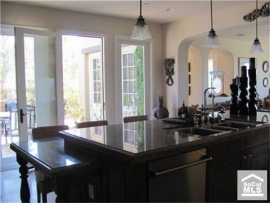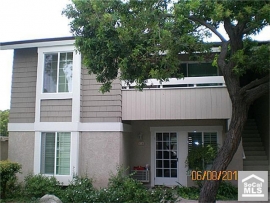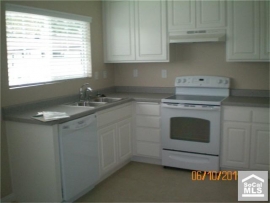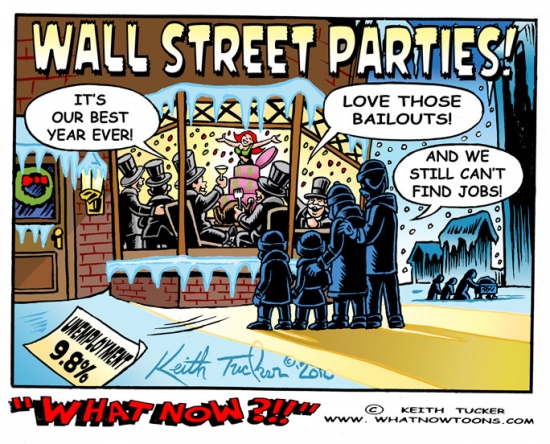Bank of America as part of a settlement deal will speed up the foreclosure process on the loans it services for investors.


Irvine Home Address … 10 SILKGRASS Irvine, CA 92614
Resale Home Price …… $585,000

I know baby it's hard to be strong
Just take the good with the bad
And don't think you're alone
Frankie and the Knockouts — Sweetheart
In January I asked, Did BofA get a sweetheart deal at the expense of the US Taxpayer? When B of A purchased Countrywide, the government agreed to backstop their losses after certain thresholds were met. This limitation on downside risk is the only reason B of A was willing to buy the steaming pile of mortgages on Countrywide's balance sheet. I don't know if we are on the hook for the losses recently announced, but B of A is getting serious about resolving the issues pertaining to the crap on its balance sheet and the liabilities it took on when it bought Countrywide.
BofA to pay $8.5B housing crash settlement
Payment to investors for mortgage meltdown reportedly the largest ever
msnbc.com staff and news service reports — June 29, 2011
NEW YORK — Bank of America Corp said on Wednesday that it will pay $8.5 billion to settle claims from investors that lost money on mortgage-backed securities, in a landmark pact that could influence other major banks to settle mortgage claims.
This will establish a precedent other major banks will be forced to deal with. Expect to see more such announcements in the coming months.
The sum would be big banks' largest single settlement thus far related to the financial crisis that helped spark the Great Recession. The settlement, which Bank of America said would lead to a second-quarter loss, is subject to court approval.
“This is another important step we are taking in the interest of our shareholders to minimize the impact of future economic uncertainty and put legacy issues behind us,” said Bank of America Chief Executive Officer Brian Moynihan in a statement. “We will continue to act aggressively, and in the best interest of our shareholders, to clean up the mortgage issues largely stemming from our purchase of Countrywide.”
Notice the bullshit implication that B of A was largely responsible with its lending. B of A has huge problems with its own portfolio, but since B of A was less stupid than Countrywide, B of A can look relatively responsible in comparison.
Bank of America said the charges would include an additional $5.5 billion to cover expected payments to other mortgage bond investors.
As a result of the settlement, Bank of America said in a statement that it expects to report a net loss in the range of $8.6 billion to $9.1 billion in the second quarter of 2011, or $0.88 to $0.93 per diluted share.
As banks earn more money, they can write off more bad debt. This will ultimately help them stop the amend-pretend-extend dance and clean up their balance sheets. This is an important, albeit painful, step forward.
The $8.5 billion settlement covers claims from 22 institutional investors, including BlackRock Financial Management, Pacific Investment Management Co and Western Asset Management. The bank said the settlement is linked to mortgages made by Countrywide Financial Corp, once the nation's largest mortgage lender, which it bought in 2008. …
For several months, Bank of America battled claims based on estimates “that were much different from ours,” Moynihan said. But at this point, it made more sense to settle than to keep fighting, he said.
“We have said consistently if people are reasonable and can get to a reasonable assessment of their claims and it's in the best interest of shareholders, we will settle,” Moynihan told Wall Street analysts in a conference call.
Citi analyst Keith Horowitz said the settlement, which amounts to only 2 percent of the original principal balance, removes one of the largest investor risks for Bank of America.
“We think this could prove to be a step forward” for Bank of America, Horowitz said. It would show investors that the bank can manage through crisis without raising additional capital.
B of A settled for 2% of the original loan balances, and that is a reasonable assessment of the claims against them? Reasonable by B of A standards perhaps. There is no way that is reasonable by the standards of the investors, nor does it scratch the surface on the losses those investors incurred by buying the Countrywide trash.
The real story here isn't the settlement losses, it is what B of A has agreed to relative to its servicing operations.
Bank of America settlement could speed foreclosures
Investor settlement includes promise to outsource 'high risk' mortgages
By John W. Schoen — June 29, 2011
Investors who bought bonds backed by shaky loans scored a major victory Wednesday with the announcement that Bank of America will pay more than $8 billion to make up for some of their losses.
Homeowners on the other end of those shaky mortgages — especially those most at risk of foreclosure — may have less to cheer about.
In the largest settlement to date related to the rogue mortgage lending wave, Bank of America said Wednesday it would pay $8.5 billion to settle claims with investors holding about $100 billion worth of mortgage-related securities sold by its Countrywide unit. The winners include 22 large investors such as Pimco, Metropolitan Life and BlackRock, as well as the Federal Reserve Bank of New York.
Aside from their claims that Countrywide sold them bonds backed by faulty loans, the investors argued that by continuing to service bad loans rather than speeding up foreclosures, the Bank of America unit ran up servicing fees, profiting at the expense of investors.
B of A and other major banks who service investor loans have two incentives not to foreclose. The first is as mentioned above; they make more money on the service fees than they make if they foreclose and terminate the mortgage. Second, the major banks have huge second mortgage and HELOC portfolios that are subordinate to the first mortgages they service for others. Each foreclosure causes them to lose everything on these underwater seconds.
The choice for the major banks is to keep obtaining their large service fees and keep their seconds alive or foreclose and recognize large losses. It shouldn't be a surprise they chose not to foreclose on loans they service for outside investors.
In Higher loss severities will force lenders to resolve bad loans and liquidate REO, I noted that “Each month a loan is delinquent it costs 1.5% of the loan balance in carrying costs. That is a troubling rate of financial decay. Time is the actually the bank's enemy when it comes to loan loss severities. Banks are providing squatters time in hopes they will get current and keep the zombie debt alive. Eventually, the carrying costs are going to make the loss severities so large that banks will either liquidate or implode, after which they will be liquidated anyway.”
As a result the settlement includes a promise to hire additional “subservicers” to speed up the foreclosure process for high-risk loans. That means Bank of America borrowers whose foreclosure have been on hold may now see the process accelerated.
“Living with the uncertainty of foreclosure can’t be a pleasant experience,” said Bank of America spokesman Jerry Dubrowski. “The sooner we can deal with that overhang the better for the economy.”
Did B of A start reading the IHB? Last November I argued that Foreclosures are essential to the economic recovery. I have also argued that keeping people in shadow inventory isn't good for the lender or the delinquent borrower. Until I read the statement above, I didn't think either group agreed with me.
Bank of America also faces considerable uncertainty as it continues to try put its mortgage woes behind it.
While the bank said its settlement would resolve “nearly all” its exposure related to mortgages issued by Countrywide, only holders of about a quarter of the securities have agreed to support the deal. Hundreds of investors holding an additional $300 billion worth of securities have yet to agree to the settlement, which also is subject to court approval. There are no guarantees that the remaining investors will go along.
Holdouts won't likely get a better deal, and they will merely waste attorney's fees trying.
“It is not possible to predict whether and to what extent challenges will be made to the settlement or the timing or ultimate outcome of the court approval process,” Bank of America said in its press release announcing the settlement.
Story: BofA to pay $8.5B housing crash settlement
At the height of the boom, rising home prices allowed mortgage originators to replace failed loans with freshly written performing mortgages. Lenders, investors and borrowers all assumed that there was little risk in churning out new mortgages — even if they were based on flawed information — because even if a loan defaulted, the rising value of the home securing it would minimize any potential losses.
But when home prices began falling, many of those bad loans came back to haunt the companies that had underwritten them. With demand for new mortgages drying up, there weren’t enough new loans to replace the ones that were going bad.
In the Great Housing Bubble, I pointed out that the entire subprime lending model masked its poor performance by an appreciating market — an appreciation induced by subprime lending itself. That was the Ponzi scheme embedded within the failed business model. Once prices collapsed, the high default rates translated into large default losses, and the risk became untenable. Hence, we have no subprime lending today, except perhaps for the FHA.
Now investors holding bad mortgages are demanding that lenders buy them back. Those investors include government-controlled lending giants Fannie Mae and Freddie Mac. In January, Bank of America paid $2.8 billion to Freddie and Fannie to buy back mortgages.
Bank of American concede in its press release Wednesday that that it “is not currently able to reasonably estimate” how much more it may have to pay to the two entities for losses on mortgage investments.
It’s also still not clear just how big the mounting losses on mortgage investments will be. With home prices still falling and mortgage defaults rates high, losses on foreclosed homes are hitting even those investors holding top-rated bonds. The ultimate cost of the claims will depend on how many more homes are lost to foreclosure and how much further home prices fall.
Bank of America also faces a potentially large payout to all or some of the 50 state attorneys general, who have been investigating abuses by the biggest mortgage servicers. The state officials are pressing the largest banks, including Bank of America, to pay up to $30 billion in fines and penalties. If a unified settlement can’t be reached, Bank of America could face multiple legal challenges from states that decide to pursue claims on their own.
Our banking system is still in jeopardy. It faces mounting losses, devalued REO, a huge shadow inventory, and falling house prices — which won't rebound because of the inventory they must liquidate. Fortunately for them, the federal reserve is loaning them money for nothing, and they can at least buy government treasuries earning 3%. Over time, a very long time, they will earn their way out of this hole. In the meantime, our economy will struggle.
A rare good deal?
The owner of today's featured property has owned it for a long time. My records go back to 1995, and it doesn't pick up the original purchase. This property is owned free-and-clear, so no lender approval is required to sell it. The asking price is at or below recent comps, and the cost of ownership is comparable to rental with today's 4.5% interest rate.
Even in today's weak real estate market, I don't expect this $244/SF property to last long.
If we see more pricing like this, I will become more bullish. The price is still too high, but the 4.5% interest rate is making it payment affordable relative to a rental. In high demand markets like Irvine, those circumstances will prompt people to buy despite the likelihood of lower prices.


Irvine House Address … 10 SILKGRASS Irvine, CA 92614 ![]()
Resale House Price …… $585,000
Cost of House Ownership
————————————————-
$585,000 ………. Asking Price
$117,000 ………. 20% Down Conventional
4.49% …………… Mortgage Interest Rate
$468,000 ………. 30-Year Mortgage
$101,507 ………. Income Requirement
$2,369 ………. Monthly Mortgage Payment
$507 ………. Property Tax (@1.04%)
$0 ………. Special Taxes and Levies (Mello Roos)
$122 ………. Homeowners Insurance (@ 0.25%)
$0 ………. Private Mortgage Insurance
$395 ………. Homeowners Association Fees
============================================
$3,392 ………. Monthly Cash Outlays
-$395 ………. Tax Savings (% of Interest and Property Tax)
-$617 ………. Equity Hidden in Payment (Amortization)
$194 ………. Lost Income to Down Payment (net of taxes)
$93 ………. Maintenance and Replacement Reserves
============================================
$2,667 ………. Monthly Cost of Ownership
Cash Acquisition Demands
——————————————————————————
$5,850 ………. Furnishing and Move In @1%
$5,850 ………. Closing Costs @1%
$4,680 ………… Interest Points @1% of Loan
$117,000 ………. Down Payment
============================================
$133,380 ………. Total Cash Costs
$40,800 ………… Emergency Cash Reserves
============================================
$174,180 ………. Total Savings Needed
Property Details for 10 SILKGRASS Irvine, CA 92614
——————————————————————————
Beds: 4
Baths: 2
Sq. Ft.: 2400
$244/SF
Property Type: Residential, Condominium
Style: Two Level, Contemporary.png)
Year Built: 1984
Community: 0
County: Orange
MLS#: S664501
Source: SoCalMLS
Status: Active
——————————————————————————
Gorgeous remodel property with added/permite DEN . Light hardwood floors through the main level. New cabinets with granite countertops built-in refrigerator. All new appliances. all of the bathroom have been redone huge master shower and more and more. Den is added.































.jpg)






